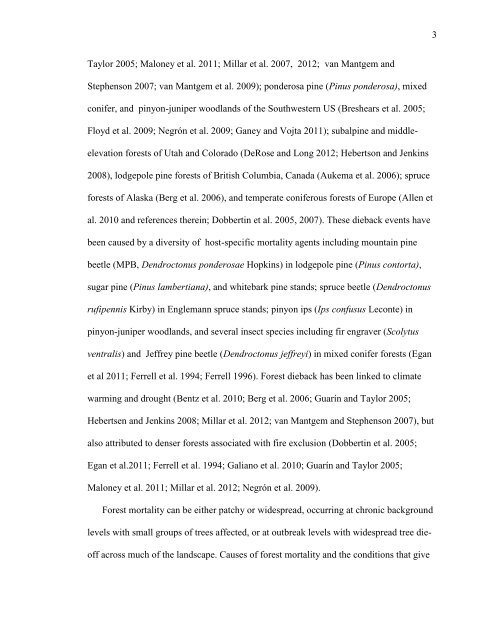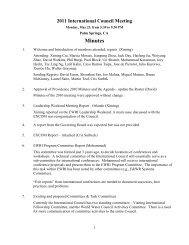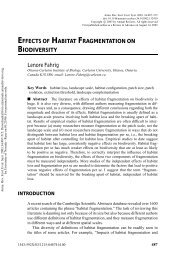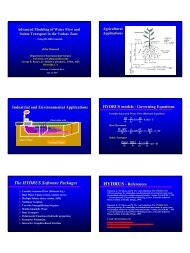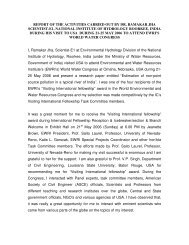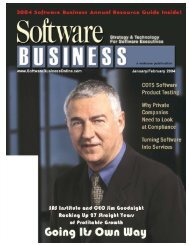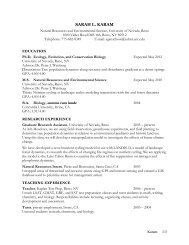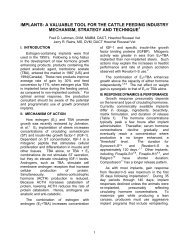Van Gunst, K.J. 2012. Forest Mortality in Lake Tahoe Basin from ...
Van Gunst, K.J. 2012. Forest Mortality in Lake Tahoe Basin from ...
Van Gunst, K.J. 2012. Forest Mortality in Lake Tahoe Basin from ...
- No tags were found...
Create successful ePaper yourself
Turn your PDF publications into a flip-book with our unique Google optimized e-Paper software.
3Taylor 2005; Maloney et al. 2011; Millar et al. 2007, 2012; van Mantgem andStephenson 2007; van Mantgem et al. 2009); ponderosa p<strong>in</strong>e (P<strong>in</strong>us ponderosa), mixedconifer, and p<strong>in</strong>yon-juniper woodlands of the Southwestern US (Breshears et al. 2005;Floyd et al. 2009; Negrón et al. 2009; Ganey and Vojta 2011); subalp<strong>in</strong>e and middleelevationforests of Utah and Colorado (DeRose and Long 2012; Hebertson and Jenk<strong>in</strong>s2008), lodgepole p<strong>in</strong>e forests of British Columbia, Canada (Aukema et al. 2006); spruceforests of Alaska (Berg et al. 2006), and temperate coniferous forests of Europe (Allen etal. 2010 and references there<strong>in</strong>; Dobbert<strong>in</strong> et al. 2005, 2007). These dieback events havebeen caused by a diversity of host-specific mortality agents <strong>in</strong>clud<strong>in</strong>g mounta<strong>in</strong> p<strong>in</strong>ebeetle (MPB, Dendroctonus ponderosae Hopk<strong>in</strong>s) <strong>in</strong> lodgepole p<strong>in</strong>e (P<strong>in</strong>us contorta),sugar p<strong>in</strong>e (P<strong>in</strong>us lambertiana), and whitebark p<strong>in</strong>e stands; spruce beetle (Dendroctonusrufipennis Kirby) <strong>in</strong> Englemann spruce stands; p<strong>in</strong>yon ips (Ips confusus Leconte) <strong>in</strong>p<strong>in</strong>yon-juniper woodlands, and several <strong>in</strong>sect species <strong>in</strong>clud<strong>in</strong>g fir engraver (Scolytusventralis) and Jeffrey p<strong>in</strong>e beetle (Dendroctonus jeffreyi) <strong>in</strong> mixed conifer forests (Eganet al 2011; Ferrell et al. 1994; Ferrell 1996). <strong>Forest</strong> dieback has been l<strong>in</strong>ked to climatewarm<strong>in</strong>g and drought (Bentz et al. 2010; Berg et al. 2006; Guarín and Taylor 2005;Hebertsen and Jenk<strong>in</strong>s 2008; Millar et al. 2012; van Mantgem and Stephenson 2007), butalso attributed to denser forests associated with fire exclusion (Dobbert<strong>in</strong> et al. 2005;Egan et al.2011; Ferrell et al. 1994; Galiano et al. 2010; Guarín and Taylor 2005;Maloney et al. 2011; Millar et al. 2012; Negrón et al. 2009).<strong>Forest</strong> mortality can be either patchy or widespread, occurr<strong>in</strong>g at chronic backgroundlevels with small groups of trees affected, or at outbreak levels with widespread tree dieoffacross much of the landscape. Causes of forest mortality and the conditions that give


